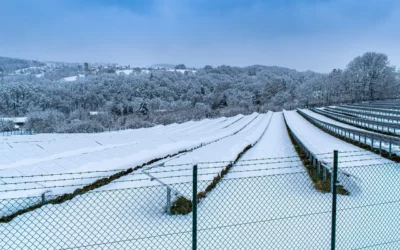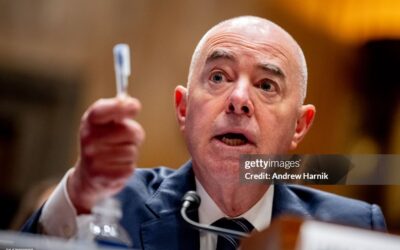
SA’s next energy crisis
But the government then displayed exactly the same bone-headed thinking that P.W. Botha had exhibited when he decided to privatize the railways, for he then added the rider that even after privatization the state would continue to nominate an absolute majority of the railway’s board of directors – i.e. the private sector could buy 51% but the government would still have control. Unsurprisingly, there were no bidders.
The ANC government did much the same, adding all manner of non-market conditions which the private power bidders would have to fulfil and then adding that the state would continue to set the electricity price. That killed the bidding stone-dead, for producers of any product naturally want to determine their product’s price and no one was keen to invest billions when the state might force them to sell at a loss. Given the way that Thabo Mbeki liked boasting to investors about South Africa having the cheapest electricity in the world, that seemed only too likely.
In fact, of course, all that this showed was neither Botha nor the Mbeki government had the faintest idea of how market-driven enterprises worked. Already in 2001 the government, despite the warning it had received, had proudly unveiled its Free Basic Electricity Policy, guaranteeing 50 kWh of free electricity to every poor household – every month. This quickly led to a 50% increase in residential energy consumption, with no one knowing how that was going to be supplied down the line. This wasn’t just a lack of forward thinking. It was forward non-thinking.
One trembles as one thinks of a government endowed with such colossal ignorance having then to decide, as the 2007 crisis neared, what strategy to follow. The key variables were what energy source to use, who was to supply it and who would build the new power installations. Even in 2007 there were plenty of voices arguing for privately supplied renewable energy. Apart from being clean, wind and solar facilities could be built quickly and not too expensively.
Another option was nuclear. Environmentalists rather foolioshly tended to oppose this, somehow conflating the risks of nuclear weapons with civil nuclear power. In fact many countries have successfully used this clean power for many decades without incident. France, for example, has relied on its fleet of nuclear power stations as its primary power source ever since the 1970s and has never had an accident. If one went this way, one could buy such plants off the shelf from the French, the US, the Russians, the Koreans and several others. Koeberg had been an outstanding success, after all, and now one could have much safer and more modern nuclear power stations.
Unerringly, the government made the worst possible choice. It would choose the dirtiest possible fuel, coal, and instead of commissioning the private sector or foreigners to build the power plants, the state would design, build and project manage these gigantic installations itself, despite its entire lack of relevant skills or experience – a decision of quite outstanding stupidity. The new plan revolved around the construction of two new giant power stations, Kusile and Medupi.
The point was, of course, that choosing coal made the NUM happy, while the decision to self-build promised another bonanza for various unions and BEE suppliers. This arrangement also allowed the government to make its own cosy arrangement with Hitachi, to the greater benefit of ANC funds, until this was unpicked as corrupt by the US commercial authorities. Already waiting in the wings and salivating were the many BEE “junior coal miners”, hoping to make a packet out of supplying the new power stations.
Cut to 2021, after all the intervening agonies we know, and ask an energy consultant (who has to be anonymous) about South Africa’s quandary over coal:
“So much has been invested politically and financially in the coal market, they don’t know how to deal with it. The last 20 years in this country have not been about economic growth, they have been about the enrichment of vested interests and privileged networks. You can see people still clinging to that – and justifying it because thousands of jobs depend on that.”
The critical decision, taken by the Zuma-Gupta government, was to take the coal supply contracts away from the big mining companies, who supplied coal relatively cheaply on dedicated railway lines or conveyer belts direct to the power stations, and hand these contracts instead to a host of smaller BEE suppliers who had to use thousands of lorries to get their (far more expensive) coal to the power stations. This made the coal mine-owners rich. They in turn became major donors to ANC funds – and this vicious circle was paid for by consumers through sky-high electricity prices. Like so many “gains” for transformation this came at a tremendous cost to the national economy.
As has been well documented, Kusile and Medupi suffered endless delays and cost overruns due not only to design flaws but to the complete failure of Eskom to project manage these giant facilities successfully and to extensive looting and corruption. Finally, this month (August 2021) Eskom announced that Medupi was at last complete and that its sixth and last generating unit had begun supplying power to the grid. What remained were 24 months more of work on removing boiler design defects and then, at long last, the job would be complete.
Bheki Nxumalo, group executive of Eskom’s capital division, proudly declared that “This is an investment that will serve generations of the people of South Africa and power the economy for at least the next half-century”. A week later an explosion took place at Medupi: we still await details.
Meanwhile for the last six years there has been insistent pressure for two further coal-fired power stations to be built, Thabametsi (630 megawatts) and Khanyisa (300 megawatts). Even when Medupi and Kusile were first conceived world opinion against further reliance on coal-fired plants had been extremely strong but this had been ignored by the government which was completely in hock to parochial interests. Now, however, this international opposition to coal burning has risen to gale force, the government has belatedly become panicky and these two power stations seem unlikely ever to be built.
What all this boils down to is that ever since 1998 South Africa has been having its own little energy crisis in which it first refused to acknowledge that it was running short of power, then started having power cuts and was panicked into building monstrous and ill-chosen new power stations, then had thirteen years of power cuts because it insisted on appointing a series of black CEOs at Eskom whose only “solution” to the crisis was to skip maintenance, finally appointing a white manager who has started the long march back through the maintenance manual. During all this time the country and the state have been fixated on their own parochial problems and have ignored the way that the international context has been changing.
Now, however, there is a dawning realisation that internationally things have changed completely. While South Africa has been happily installing ever more coal-fired power stations, the world has turned strongly against them. But whereas the world relies on coal for 34% of its power, in South Africa that figure is 86%.
The new “code Red for humanity” IPCC document on climate change together with wildfires, floods, droughts, and other climate change shocks have created a fresh wave of panic about irreversible damage to the planet and it is certain that the forthcoming COP26 conference in Glasgow will see a further ramping up of demands for sweeping and immediate change.
All of which leaves South Africa dreadfully exposed. In effect we have been happily sailing in the wrong direction for over twenty years, ignoring the rising clamour about climate change – but suddenly we will be able to ignore it no more. And the facts are horrible.
Although we have only the 41st biggest economy in the world we are the 12th biggest carbon emitter, a disparity which makes South Africa an inevitable target. Secunda, Sasol’s coal-to-oil plant, is the single worst site in the world for the emission of greenhouse gases. South Africa is the world’s fourth biggest coal exporter. On any reckoning we are on a very short list of the world’s worst offenders when it comes to carbon emissions.
To a degree which would astonish most South Africans other countries have been racing to mend their ways. Already, for example, there are some days during which the whole of Britain’s energy needs are supplied by wind power, much of it situated in the North Sea. Most Western countries have adopted strong incentives for the switch to electric vehicles (EVs). In Europe EVs have a ten year tax exemption and EVs priced at E40,000 or below enjoy a subsidy of E9,000. Many other countries have followed – India offers generous EV subsidies, for example. Europe aims to have at least 30 million EVs on the road by 2030, by which time petrol or diesel driven vehicles will be museum pieces.
Again, South Africa is nowhere on this front. We are so backward that we are still levying extra taxes on EVs as if our aim is to keep them off the road. The big car manufacturers have already warned the government that they will soon need to go over to EV-only production and that they will not continue to produce petrol and diesel vehicles for South Africa only. In other words South Africa needs to move at top speed to establish EV-charging stations everywhere.
But the government has done nothing and, of course, there isn’t enough electricity to power industry as it is, let alone take on the huge new task of powering the nation’s cars. Suddenly, one descries the awful cost of having dawdled over dealing with the Eskom crisis. All those years of employing CEOs at Eskom on the basis of their race or political connections who then economised on maintenance are beginning to look very expensive indeed.
Moreover, the EU has now devised a Carbon Border Adjustment Mechanism (CBAM) which will equalize the price of carbon between domestic products and imports so that stiff EU emission controls will not be undermined by “carbon leakage”.
In effect this will mean an extra tariff on imported goods whose production has involved carbon emissions (“embedded emissions”). These tariffs will be levied from 2026 onwards. Other countries – for example Canada and Japan – are also planning to go the CBAM route.
Thus the CBAM will hit exporters to the EU within five years and the EU will start by tackling imports of iron, steel and aluminium goods. South Africa exports these metals to the EU and, more important, its whole car industry is dependent on access to the EU, which is South Africa’s biggest trading partner.
It goes without saying that South Africa is wholly unprepared to meet these radical changes. Little wonder that Ramaphosa has expressed the hope that developing countries would be given more time to comply with these new requirements. Really one would have expected that South Africa would now be caught up in a whirlwind of activity, both lobbying for more time and desperately trying to improve its compliance. But of such activity there is little sign.
Last month Andre de Ruyter, Eskom’s boss, put forward a $10 billion plan to multilateral banks and agencies, hoping to avail itself of funds made available to assist a transition to renewable forms of energy.
It is typical that no minister had put forward such a plan despite a rapidly approaching deadline for applying for such funds. Similarly, despite Ramaphosa’s announcement that companies and cities would be allowed to generate up to 100 megawatts of their own power, this initiative has been further held up by Gwede Mantashe. There is absolutely no sign of urgency.
Barbara Creecy, the Minister for the Environment, has rightly pointed out that trillions of dollars may be made available to help Third World countries transition to cleaner power but if South Africa wishes to take advantage of such funding it will need to wake up.
Western countries and agencies are well aware of the tendency for aid monies to vanish into the private bank accounts of African leaders and one may be sure that money for a green transition will be hedged around with many conditions and precautions.
Applying for such funding will be a complex matter and it will have to be spent without any of the “wasteful and irregular” expenditure that the Auditor-General so frequently remarks upon.
Mr Nxumalo of Eskom, we have seen, speaks proudly of how Medupi will provide power for South Africa for the next fifty years. The irony is, however, that Medupi and Kusile are now obsolete even before they have managed to reach full production.
For these are exactly the sort of monster greenhouse gas-producers that the Intergovernmental Panel on Climate Change (IPCC) and its supporters will want to see taken out of production altogether. The awful prospect looms more and more clearly that South Africa may have to scrap not just one or two ageing coal-powered stations but its entire energy policy and all the investment it has poured into it since 2007.
Doubtless Mr Mantashe and the vested interests that he represents will resist all such moves but the stakes are very high. Does South Africa wish to retain its car industry or not? Does it want to retain its biggest trading partner? South Africa will doubtless plead for more time to make the necessary changes but more time is precisely what the IPCC says we don’t have.
There is, too, a highly controversial rider to the evolution now in prospect. If South Africa is forced effectively to write off all or most of its investment in coal-fired energy, the state will simply not have the money to finance either the renewables or nuclear-based options that it should have chosen in the first place.
So should that come to pass Eskom will have to be wound down and cede its place to a wholly private market place of electricity generation companies. One can imagine what Mr Mantashe would think of that.
R.W. Johnson

Politicsweb depends upon its growing supporter base both to fund its work and secure its independence.
In return our supporters have access to the reader optimised version of the site, with no intrusive in-text adverts, unrestricted access to all our content, and the ability to comment on articles.
If you would like to become a member please visit our Steady page in order to sign up.
Punishing Winnie Mandela
The new Lepers
DA secures historic victory over cadre deployment – Leon Schreiber
Cyril Ramaphosa’s statement to the Zondo Commission
COSATU rejects Treasury’s statement on exclusion of public servants from pension withdrawals










0 Comments